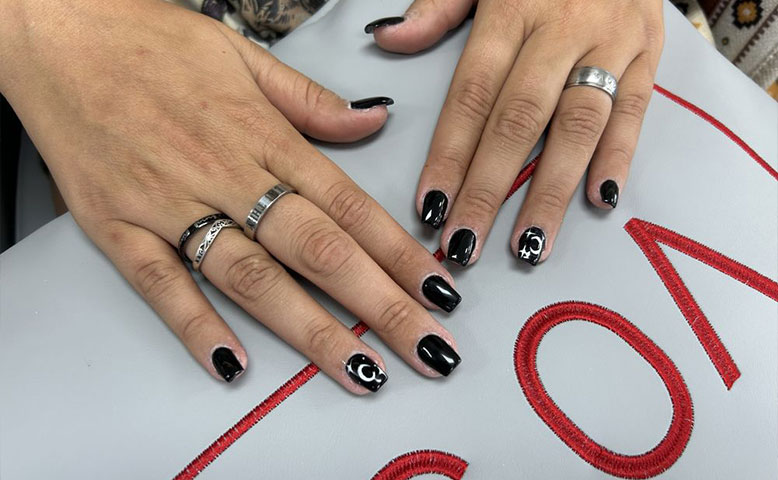Fast fashion is quick and cheap, but it leads to waste. A smarter way is to fix and fit what you already own. Small changes—like shortening a hem, moving a button, or replacing a zipper—can turn an “okay” piece into a favorite. Altering clothes saves money, keeps fabric out of landfills, and helps you feel neat without buying more. It also lets you adjust items as your body or style changes. In this blog, you’ll learn simple fit checks, eco facts, common fixes, and easy care steps. We’ll also cover smart cost math so you know when a repair is worth it. By the end, you’ll see how small steps make a big, lasting change.
Why Fixing Clothes Beats Fast Fashion Today
Buying new can feel fun, but a good fit matters more than new tags. Alterations focus on your shape, not a size chart. A shirt that rests on the shoulder point, follows your torso, and ends at the right length will always look better than a new shirt that doesn’t fit. Pants that match your rise and inseam hang straight and move easily. A Good fit also cuts returns and closet clutter. When you fix what you own, you keep a clean style that works day after day.
- A better fit makes getting dressed faster.
- Repairs add years to your favorite pieces.
- Fewer impulse buys mean less waste and stress.
Simple rule: if a piece is close to right, fix it. If it pulls, sags, or drags, a small change often solves it faster than a shopping trip.
Fit, Fabric, And How Clothes Are Made
Great results start with a few clear checks:
- Shoulder seam: should sit on the top of your shoulder.
- Sleeve pitch: the sleeve angle; if it twists, it may need a small rotate.
- Waist shaping: light “take in” at side seams can smooth the line.
- Hem balance: hems should look level and meet your shoes or wrist well.
Some useful technical bits, kept simple:
- SPI (stitches per inch): More stitches can mean smoother seams on fine cloth; medium SPI suits denim and twill.
- GSM (grams per square meter): tells fabric weight.
- Light (90–150 GSM): voile, lawn—soft but can pucker.
- Mid (150–250 GSM): poplin, flannel—hold shape well.
- Heavy (250+ GSM): denim—needs stronger needles.
- Common stitch types:
- Lockstitch for strong seams.
- Overlock/serge to stop fraying.
- Blind hem for near-invisible pant hems.
- Needle sizes: 70/10 for light cloth, 80/12 for mid, 90/14+ for heavy.
- Interfacing: adds support to collars and waistbands; fused is common, sew-in is softer.
These basics help you ask the right questions and get clean, sturdy results.
The Real Cost Of Fast Fashion Waste
Clothes use a lot of resources before they reach you. Cotton needs water and land. Polyester comes from oil and can shed tiny fibers in the wash. Dyes and long shipping trips add to the footprint. Fast fashion also pushes quick buys that wear out fast, which sends more fabric to landfills. Keeping a shirt or pair of jeans in use for even nine more months spreads the original impact over many extra wears. That means less water used per wear, less energy per wear, and less trash.
Simple ways to cut waste right now:
- Repair first: patch, re-sew, or replace a zipper.
- Swap and alter: trade with friends, then fit items to you.
- Choose durable staples: thicker tees, sturdy denim, and strong buttons.
- Wash smarter: cooler water and full loads reduce fiber shedding.
Small changes at home can add up to big savings for the planet.
Common Fixes That Make Clothes Last Longer
You do not need a full remake to see a big change. Start with fast, high-impact fixes that most shops handle daily:
- Hems and cuffs: Shorten jeans, chinos, and sleeves for clean lines. Ask for an original hem on denim to keep the factory look.
- Waist and seat: Let out or take in 1–2 inches to stop gaping and pinching.
- Taper legs or sleeves: A gentle taper slims the look without blocking movement.
- Zipper swap: A new YKK zipper brings back jackets, jeans, and dresses.
- Button move: Shifting a button by ¼ inch can stop pulling at the bust or waist.
- Darts and side seams: Add shape to shirts and dresses while keeping ease.
- Lining and patchwork: Catch small tears early so they do not spread.
Basic tools behind the scenes: measuring tape, chalk, seam ripper, the right needle, and firm pressing between steps. Good pressing sets seams so the shape holds through many wears.
Easy Care Habits For Stronger, Safer Clothes
Once you fix a piece, keep it strong with simple care:
- Wash less, air more: Hang after wear to release odors. Spot clean early with water and mild soap.
- Use lower heat: Warm or cold water cuts, shrink, and color bleed. High heat weakens fibers and elastic.
- Turn inside out: Protect surface fibers and prints.
- Mesh bags or filters: Help catch microfibers from synthetics.
- Press with steam: Use a pressing cloth on wool, silk, or rayon to avoid shine marks.
- Store smart: Wide hangers for jackets; fold heavy knits so they do not stretch.
Smart Money Math For Alterations Versus Buying
Think in cost per wear. If a $25 hem and taper helps you wear pants 50 more times, that’s 50 cents per wear—often far less than buying new ones that still might not fit. A few price ranges (may vary by shop and city):
- Simple pant hem or sleeve shorten: usually the lower range.
- Taper legs or side seams: mid-range.
- Zipper replacement: more than a hem, less than a new coat.
- Jacket changes at the shoulders: most complex; ask for a quote first.
Use a quick test before you decide:
- Will I wear this 20+ more times after the fix?
- Is the fabric sturdy? Midweight denim, twill, wool, and lined skirts often pass.
- Does the style work with pieces I own now?
Another rule of thumb: if the fix costs less than one-third of the replacement price and you like the piece, it is likely worth doing.
How To Work Well With A Tailor
Clear steps lead to smooth results. Wear the shoes and underlayers you plan to use with the garment. Move during the fitting: sit, lift arms, and walk. Say where it feels tight or loose. Ask about seam allowance (extra fabric inside the seam) if you may need to let it out later. For sleeves, confirm the sleeve pitch and cuff length after the hem. For pants, check the break—how the hem meets the shoe.
Bring a short checklist:
- Target points: shoulders, waist, seat, rise, and hem.
- Fit level: snug, easy, or roomy.
- Style notes: tapered leg, straight hem, or cuffs.
- Care needs: machine wash only, or okay with dry clean.
A quick follow-up fitting helps catch tiny issues (like a twisting sleeve or a hem that kisses the floor) before final stitching.
Conclusion: Small Fixes That Change Your Closet
Choosing repairs over fast fashion keeps clothes useful, saves money, and cuts waste. Simple fixes—hems, darts, waist tweaks, and zipper swaps—make pieces feel right again without more shopping. If you want friendly help and steady results, visit Vo’s Nails & Tailor. We provide clothing alteration services for jeans, dresses, suits, and daily wear. Bring a few items from your closet, share your goals, and let us adjust the details that matter most. Small steps today can keep your favorite clothes ready for many seasons.

